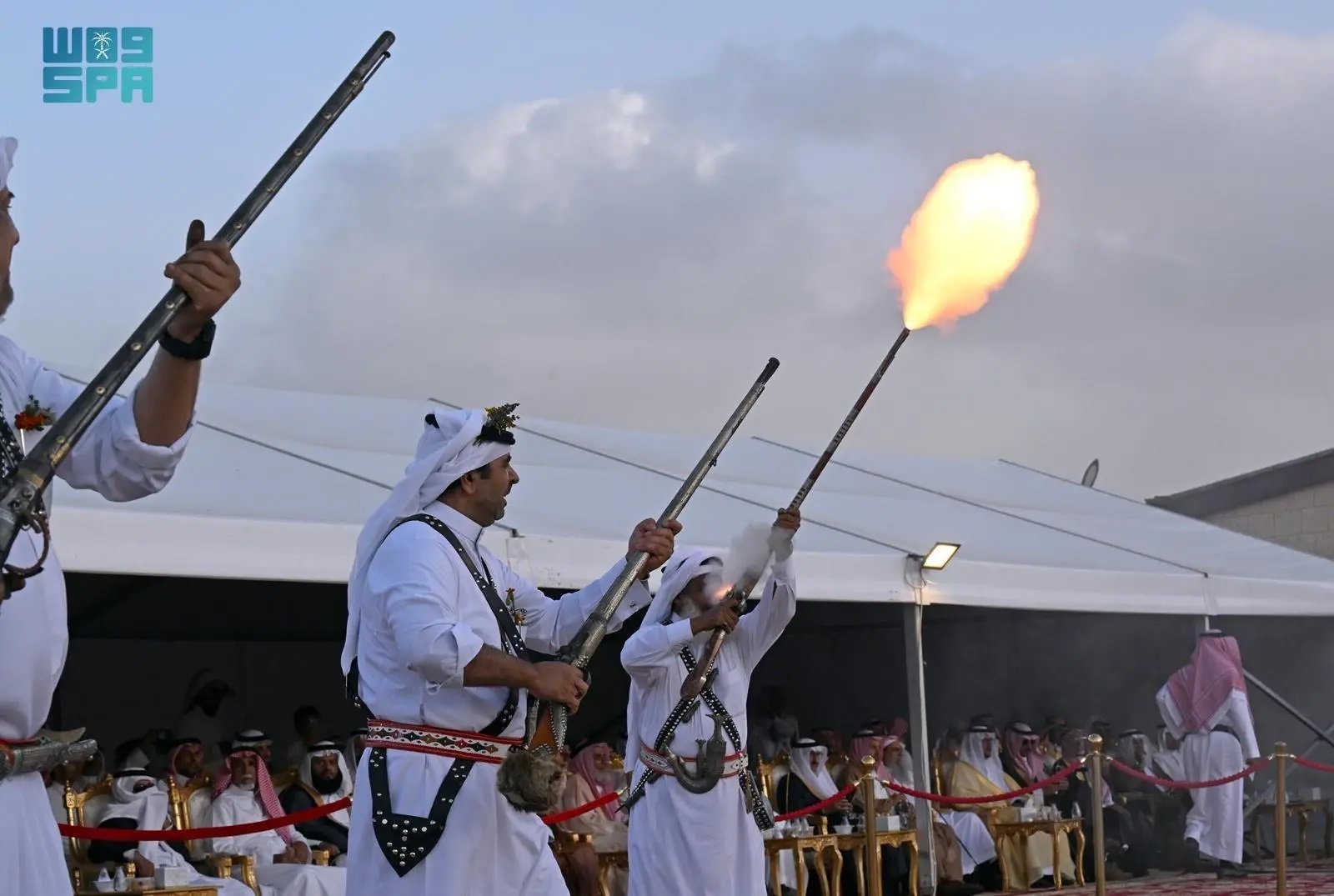
'Al-Maqmaa': A Copper-Adorned War Heritage Igniting Joyful Celebrations
In the heart of the governorate of Al-Namas in Aseer Region, where heritage palaces stand as silent storytellers amid mud and wooden walls, tradition continues to breathe life into a craft rooted deeply in the collective memory of the region. One such tradition is the centuries-old art of making traditional weapons, particularly 'Al-Maqmaa', which once served not only as tools of defense but also as prominent fixtures in social and cultural celebrations.
Al-Maqmaa's crafting process begins with selecting quality wood to form the weapon’s body, combined with a carefully forged iron barrel. Essential components such as 'Al-safha,' a compartment for storing gunpowder, and the 'darrab,' used to compact the powder, are assembled with precision. Once the structural elements are in place, the weapon enters its most visually striking phase: embellishment. Artisans meticulously decorate each piece with brass, silver, and intricate engravings, transforming it into a work of heritage art.
Craftsman Fahd Al-Shehri preserves and develops the craft passed down to him by his father, who opened one of the first Al-Maqmaa repair shops in Al-Namas in 1397 AH. Using advanced tools and machinery for the time, his father was a pioneer in modernizing the practice without losing its essence. Today, Fahd continues the legacy, adapting the weapon to modern tastes, producing lighter, more compact versions tailored to a younger generation increasingly proud of their heritage.
A traditional celebration in Aseer is incomplete without the iconic appearance of Al-Maqmaa, accompanied by the 'zahab,' a cross-body leather belt embedded with metal studs. The belt holds gunpowder cartridges used to ignite the weapon during festivities.
Complementing this craft is the production of traditional black powder, an equally demanding discipline. Gunpowder was made from three essential ingredients: salt derived from specialized soils, naturally occurring sulfur, and charcoal made by slow-burning tree branches. The ingredients were precisely mixed and dried to produce the explosive compound used not only in weapons but historically also in rock blasting and well excavation.
Researcher Dr. Saleh Abu Arad, in one of his books, affirmed the centrality of this craft in the social and cultural fabric of Aseer. He said that Al-Maqmaa remains a symbol of heritage, passed down through generations, and stands as an authentic expression of Aseer region’s identity.








